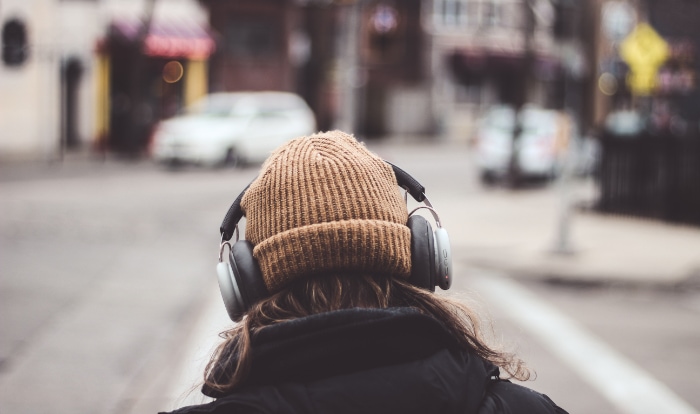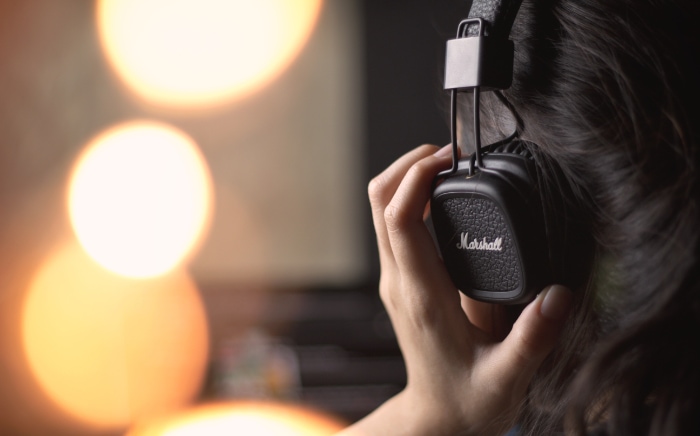Why Do Headphones Hurt My Ears? Unmasking the Culprit

Headphones are ubiquitous in today’s digital age, becoming almost as essential as the devices they’re connected to. Whether for music, movies, or meetings, they provide the means for private listening, turning any place into a personal theater or concert hall. However, this convenience does come at a cost, and for many, that cost is physical discomfort or pain.
Ear pain from using headphones is a common issue experienced by many, but what causes it, and how can it be prevented?
Examining the Various Types of Headphones
Understanding why headphones might cause ear discomfort begins with exploring the different types of headphones available on the market. Each type has a unique design and interacts with the ears in different ways, which can contribute to potential discomfort.
Let’s take a look at the three most common types: in-ear headphones, on-ear headphones, and over-ear headphones.
In-Ear Headphones (Earbuds)
Often compact and lightweight, in-ear headphones, also known as earbuds, are designed to fit directly into the ear canal. They are widely used due to their portability and often come packaged with smartphones.
However, because they sit inside the ear canal, they can cause discomfort if not properly fitted. They might also lead to ear infections if not cleaned regularly due to the proximity to sensitive inner ear structures.
On-Ear Headphones
On-ear headphones are designed to rest directly on the ear, covering the ear canal but not the entire ear. They are generally larger than in-ear headphones and provide better sound quality due to larger drivers.
Nevertheless, because they press against the ear, extended use can lead to discomfort due to pressure on the outer ear (pinna). This pressure can also cause issues like soreness and even temporary indentation on the skin.
Over-Ear Headphones
Over-ear headphones, also known as circumaural headphones, have large ear cups designed to encase the entire ear. They often offer superior sound quality and noise isolation due to their size and design.
While they tend to be more comfortable than on-ear headphones for extended use, they can cause discomfort due to their weight. They might also lead to ear sweating or overheating because they cover the entire ear, restricting airflow.
Unraveling the Common Reasons Why Headphones Hurt Ears
The discomfort or pain experienced when using headphones can be attributed to various factors, often related to physical characteristics, sound-related aspects, or misuse of the device. In this section, we’ll elaborate on these causes and provide insights into how they contribute to ear discomfort.
Physical Factors Influencing Discomfort
Anatomy of the Ear and Its Interaction with Headphones
The ear is a sensitive organ with a complex structure. Continuous pressure or contact with foreign objects like headphones can potentially lead to discomfort or pain.
Each type of headphone interacts differently with the ear, as explained in the previous section, and can cause strain in different parts of the ear.
Impact of Headphone Size, Shape, and Material
Headphones that are too tight, too large, or made from harsh materials can cause discomfort. For instance, headphones with hard plastic or poor padding can lead to pressure points that cause pain over time.
Similarly, in-ear headphones that are too big for your ear canal can cause significant discomfort.
Effect of Prolonged Usage
Using headphones for extended periods can cause fatigue and discomfort in the ears due to the constant pressure and heat, regardless of the type of headphones used. This can be further exacerbated if the headphones are heavy or poorly fitted.
Sound-Related Factors Contributing to Discomfort
Potential Hearing Damage from High Volume Levels
Listening to loud music or sounds for an extended period can cause a condition known as noise-induced hearing loss. This could also lead to discomfort, a feeling of fullness in the ears, or even tinnitus (ringing in the ears).
Impact of Sound Frequency on Discomfort
High-frequency sounds can cause more discomfort than low-frequency sounds at the same volume level. This is because our ears are more sensitive to high-frequency sounds, and prolonged exposure can lead to auditory fatigue and discomfort.
Active Noise Cancellation (ANC) Technology and Its Effects
While ANC technology helps in reducing background noise, some users might experience a feeling of pressure, similar to the sensation felt in an airplane cabin, which can cause discomfort. This is due to the sound waves produced by the headphones to cancel out the ambient noise.
Misuse of Headphones Leading to Discomfort

Incorrect Fitting or Adjustment
Wearing headphones incorrectly can lead to discomfort. For example, if the headphone band is too tight, it can put excess pressure on the ears. Similarly, in-ear headphones worn without the correct ear tips can cause pain in the ear canal.
Inappropriate Use of Headphones
Using headphones while sleeping or for an overly extended duration without breaks can lead to pain and discomfort due to the continuous pressure on the ears and lack of circulation.
Proactive Measures: Tips to Prevent Ear Discomfort When Using Headphones
Ear discomfort while using headphones can often be avoided or minimized through some simple adjustments and precautions. Here are several actionable tips to ensure a more comfortable listening experience.
Ensuring Proper Fitting and Adjustment
Select the Right Size
Always ensure that your headphones or earbuds fit correctly. In-ear headphones should not be too loose or too tight in your ear canal, while over-ear and on-ear headphones should rest comfortably on your ears without exerting excessive pressure.
Adjust Headband and Ear Cups
For on-ear and over-ear headphones, adjust the headband and the angle of the ear cups for an optimal fit. They should encompass your ears comfortably without pressing too hard on any part of the ear or head.
Making Smart Usage Choices
Limit Usage Time
Take regular breaks while using headphones. A popular rule is the 60/60 rule, which suggests listening to headphones at no more than 60% of the maximum volume for no more than 60 minutes at a stretch.
Avoid Sleeping with Headphones
Unless specifically designed for sleep, avoid using regular headphones while sleeping. The pressure exerted on the ears while lying on headphones can lead to significant discomfort and potential ear injuries.
Managing Volume Levels
Follow Safe Volume Levels
As a general guideline, keep your headphone volume at levels where you can still hear external sounds. Continually listening at high volumes can not only lead to ear discomfort but also potential long-term hearing damage.
Use Noise Cancelling Wisely
If you’re using noise-cancelling headphones, use the feature wisely. Avoid cranking up the volume to maximum to drown out ambient noise, and instead, try using the noise cancelling feature to achieve a quieter background.
Upholding Hygiene and Cleanliness
Regularly cleaning your headphones, especially earbuds, can prevent ear infections that lead to discomfort. Use disinfectant wipes or a cloth with mild soapy water, ensuring not to get any liquid inside the headphones.
Remember, every person is unique, and so are their ears. What works for others may not work for you, so it’s important to listen to your body and take necessary actions if you experience discomfort while using headphones.
Your hearing is precious – ensure you’re taking the right steps to protect it.
Conclusion
Our journey through the world of headphones and their impact on our ears has given us significant insights into the potential causes of ear discomfort and how to prevent it. It’s important to recognize that headphones, while providing a world of convenience and enjoyment, need to be used responsibly and thoughtfully to protect our hearing and overall ear health.
From selecting the right type of headphones that best suit our ears and usage, to understanding the physical and sound-related factors causing discomfort, we’ve covered a broad spectrum of considerations. We’ve also emphasized the importance of proper usage and hygiene practices for optimal headphone comfort and safety.
Listening to music or any form of audio should be an enjoyable experience. If your headphones are causing discomfort or pain, consider the tips discussed here, and remember, there are always alternatives to traditional headphones that might provide a more comfortable listening experience for you.
In a world where headphones have become a daily necessity for many, it’s crucial to prioritize our ear health. By doing so, we can continue to enjoy the richness of sound without compromising on comfort or health.



